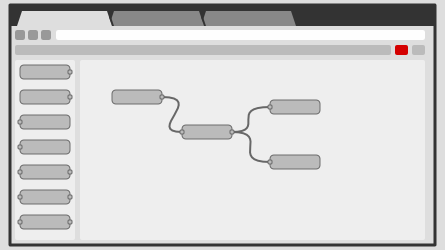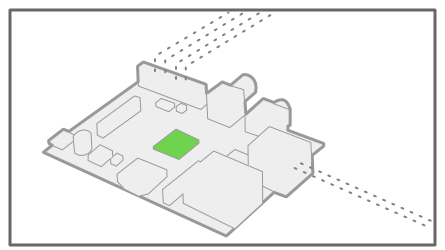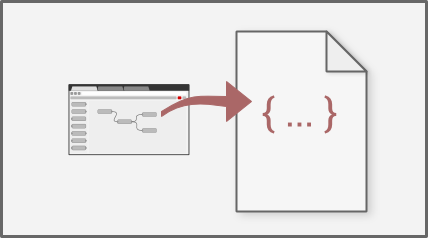What is Node RED? Introduction to Node RED
Node-RED is a programming tool for connecting hardware devices, APIs, and online services together in new and interesting ways.
It provides a browser-based editor to easily connect flows together using various nodes in the palette and deploy them to their runtime with just one click.
Node RED Features
1. Browser-based process editing
Node-RED provides a browser-based flow editor that makes it easy to connect flows together using various nodes in the palette. Then, deploy the flow to the runtime with just one click.
You can use the Rich Text Editor to create JavaScript functions in the editor.
Built-in libraries allow you to save useful functions, templates or processes for reuse.

2. Built based on Node.js
The lightweight runtime is based on Node.js, taking full advantage of its event-driven, non-blocking model. This makes it ideal for running at the edge of the network on low-cost hardware such as the Raspberry Pi, as well as in the cloud.
With over 225,000 modules in Node’s package repository, it’s easy to extend the scope of Palette Node to add new functionality.

3. Sharing ecological environment conducive to development
Streams created in Node-RED are stored using JSON and can be easily imported and exported to share with others.
The online process library lets you share your best processes with the world.

About Node RED
Node-RED is a flow-based programming tool originally developed by IBM’s Emerging Technology Services team and is now part of the OpenJS Foundation.
flow-based programming
Invented by J. Paul Morrison in the 1970s, stream-based programming is a method of describing the behavior of an application as a network of black boxes, or “nodes” in Node-RED. Each node has a clear purpose; it’s given some data, it does something with that data, and that data is passed to it. The network is responsible for the flow of data between nodes.
It is a model that is well suited for visual representation and is more accessible to a wider range of users. If someone can break the problem down into discrete steps, they can look at the flow and understand what it’s doing; no need to understand the individual lines of code in each node.
runtime/editor
Node-RED includes a Node.js-based runtime that you point your web browser to to access the flow editor. In the browser, create your application by dragging nodes from the palette to the workspace and starting connecting them together. With a single click, you can deploy your application back to the runtime it was running on.
The node palette can be easily expanded by installing new nodes created by the community, and the flows you create can be easily shared as JSON files.
history
Node-RED began in early 2013 as a side project of Nick O’Leary and Dave Conway-Jones in IBM’s Emerging Technology Services Group.
What started as a proof-of-concept for visualizing and manipulating mappings between MQTT topics quickly turned into a more general tool that can be easily extended in any direction.
It was open sourced in September 2013 and has been under public development ever since, eventually becoming one of the founding projects of the JS Foundation in October 2016.
In 2019, the Node.js Foundation merged with the JS Foundation to form the OpenJS Foundation.
Node RED applications
Currently, Node RED has been applied in Zongheng Intelligent Control’s newly developed product – EG8000 series.
Through Node RED, IoT data transmission equipment has opened a new era. Through Node RED, when we write functions, we can use them directly by dragging and dropping them, and then through nodes, we can combine functions with functions. connected in series.
Through such functions, development speed is faster! Easier to get started.

Palabras clave: pasarela industrial